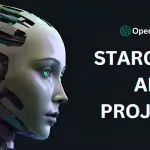
Synergies in Artificial Intelligence and Bioinformatics: A Comprehensive Overview
January 19, 2024I. Introduction
A. Definition of Artificial Intelligence
Artificial Intelligence (AI) refers to the development of computer systems that can perform tasks that typically require human intelligence. These tasks include learning, reasoning, problem-solving, understanding natural language, speech recognition, and visual perception. The overarching goal of AI is to create machines capable of simulating human cognitive abilities, enabling them to execute complex tasks autonomously.
- Overview of AI and Its Applications
AI encompasses a broad spectrum of techniques and approaches, and it can be categorized into two main types: narrow or weak AI and general or strong AI. Narrow AI is designed to perform a specific task, while general AI aims to possess the ability to perform any intellectual task that a human being can.
The applications of AI are diverse and continually expanding across various industries. In healthcare, AI is used for medical image analysis, drug discovery, and personalized medicine. In finance, AI algorithms are employed for fraud detection, risk assessment, and algorithmic trading. The automotive industry utilizes AI for autonomous vehicle development and advanced driver assistance systems. Other sectors such as education, marketing, and customer service also benefit from AI applications.
The key components of AI systems include machine learning, natural language processing, computer vision, and robotics. Machine learning enables systems to learn from data and improve their performance over time. Natural language processing allows machines to understand and interpret human language, facilitating communication between humans and machines. Computer vision enables machines to interpret and make decisions based on visual data, while robotics involves the integration of AI into physical systems for automation and control.
- Intersecting Domains: AI and Bioinformatics
Bioinformatics is a multidisciplinary field that combines biology, computer science, and information technology to analyze and interpret biological data. The intersection of AI and bioinformatics has led to significant advancements in the understanding of biological processes, drug discovery, and personalized medicine.
In bioinformatics, AI techniques are applied to analyze large datasets, such as genomic and proteomic data. Machine learning algorithms can identify patterns, extract meaningful insights, and predict biological outcomes. This is particularly valuable in genomics, where AI contributes to the identification of genetic markers, the understanding of disease mechanisms, and the development of targeted therapies.
AI in bioinformatics also plays a crucial role in drug discovery by predicting drug interactions, identifying potential drug candidates, and optimizing drug design. The integration of AI and bioinformatics accelerates the pace of research and enables more personalized and effective approaches to healthcare.
In conclusion, the definition of artificial intelligence encompasses the development of systems with human-like cognitive abilities. The applications of AI are vast and span across various industries. The intersection of AI and bioinformatics represents a cutting-edge field that revolutionizes biological research, healthcare, and drug discovery. As technology continues to advance, the synergies between AI and bioinformatics will likely lead to even more profound breakthroughs in understanding and manipulating biological systems.
II. Artificial Intelligence in Bioinformatics
A. AI-driven advancements in genomics
- Sequence Analysis and Interpretation: AI has made significant contributions to the field of genomics by revolutionizing the analysis and interpretation of DNA and RNA sequences. Traditional methods for sequence analysis were time-consuming and labor-intensive, but AI algorithms, particularly those based on machine learning, can rapidly process large volumes of genomic data. These algorithms can identify patterns, variations, and potential functional elements within genomic sequences. This has facilitated the identification of genetic markers associated with diseases, the understanding of evolutionary relationships, and the annotation of genomic regions with biological significance.
- Structural Bioinformatics: AI is also playing a crucial role in structural bioinformatics, which involves the prediction and analysis of the three-dimensional structures of biological macromolecules. Predicting protein structures, for example, is a complex task, but AI-driven methods, such as deep learning and reinforcement learning, have shown promise in accurately predicting protein structures. This has implications for understanding protein functions, drug targeting, and designing therapeutic interventions. AI in structural bioinformatics accelerates the process of determining the structure-function relationships critical for biological processes.
B. AI-powered Drug Discovery
- Predictive Modeling for Drug Candidates: One of the most impactful applications of AI in bioinformatics is in drug discovery. AI algorithms, particularly machine learning models, can analyze vast datasets to predict potential drug candidates. These models take into account various factors, including molecular structure, pharmacological properties, and known interactions, to identify compounds with therapeutic potential. This predictive modeling expedites the drug discovery process by narrowing down the pool of potential candidates for further experimental validation. It also helps in optimizing the chemical properties of drug candidates for enhanced efficacy and reduced side effects.
- Virtual Screening and Optimization: AI facilitates virtual screening, a process where computer algorithms analyze large databases of molecular structures to identify compounds that may interact with a target biomolecule. Virtual screening, combined with AI, allows for more efficient and targeted identification of potential drug candidates. Moreover, AI-driven optimization algorithms can fine-tune the chemical structures of identified compounds to enhance their potency, selectivity, and safety profile. This approach significantly reduces the time and resources required for experimental screening and increases the likelihood of discovering novel and effective drugs.
In summary, the integration of AI into bioinformatics has transformed genomics and drug discovery. AI-driven advancements in genomics enable faster and more accurate analysis of genetic data, leading to a deeper understanding of biological processes. In drug discovery, AI accelerates the identification and optimization of potential drug candidates, offering a more streamlined and efficient approach to developing new therapeutics. As technology continues to advance, the synergy between AI and bioinformatics will likely lead to further breakthroughs in precision medicine and personalized healthcare.
III. AI Chatbots in Education
A. Enhancing the Learning Experience
- Personalized Learning Paths: AI chatbots in education have the capability to enhance the learning experience by providing personalized learning paths for students. These chatbots use machine learning algorithms to analyze individual student performance, preferences, and learning styles. By understanding each student’s strengths and weaknesses, chatbots can recommend tailored learning materials, resources, and assignments. This personalized approach helps students progress at their own pace, ensuring a more effective and engaging learning experience.
- Real-time Interaction and Feedback: AI chatbots facilitate real-time interaction between students and educational content. They can answer questions, provide explanations, and offer immediate feedback on assignments or quizzes. This instant feedback loop not only supports the learning process but also helps students address misunderstandings promptly. Additionally, chatbots can engage students in interactive conversations, fostering a more dynamic and engaging learning environment.
B. University Applications
- Chatbots in Student Support Services: AI chatbots are increasingly being used in university settings to enhance student support services. These chatbots can assist students with inquiries related to course registration, academic advising, and campus resources. They can provide information about deadlines, class schedules, and university policies. By automating routine queries, chatbots free up human staff to focus on more complex tasks and provide personalized guidance where needed. This leads to improved efficiency and a better overall experience for students.
- AI in Administrative Processes: AI is applied in administrative processes within universities to streamline various tasks. Chatbots can assist in handling administrative tasks such as admissions, enrollment, and financial aid processes. They can guide students through application procedures, help them understand eligibility criteria, and provide updates on application statuses. Moreover, chatbots can assist faculty and staff with administrative tasks, such as scheduling and data retrieval, contributing to overall operational efficiency.
In conclusion, AI chatbots play a pivotal role in transforming the education landscape. By enhancing the learning experience through personalized learning paths and real-time interaction, they contribute to more effective and engaging educational environments. In universities, chatbots streamline student support services and administrative processes, improving efficiency and freeing up human resources for more complex and personalized tasks. As technology continues to advance, the integration of AI chatbots in education is likely to evolve, offering even more sophisticated solutions for both students and educational institutions.
IV. Machine Learning Courses in Universities
A. Designing a Comprehensive Machine Learning Course
- Curriculum Development: Designing a comprehensive machine learning course involves creating a well-structured curriculum that covers fundamental concepts, theoretical foundations, and practical applications. The curriculum should include key topics such as:
- Introduction to machine learning concepts and algorithms.
- Supervised and unsupervised learning techniques.
- Feature engineering and model evaluation.
- Deep learning fundamentals, neural networks, and architectures.
- Practical aspects like data preprocessing, model training, and deployment.
- Ethical considerations and responsible AI practices.
The curriculum should be updated regularly to incorporate the latest advancements in the field, reflecting the dynamic nature of machine learning.
- Practical Applications and Projects: A successful machine learning course should emphasize hands-on experience and practical applications. Integrating projects into the curriculum allows students to apply theoretical knowledge to real-world problems. These projects can cover a range of applications, such as image recognition, natural language processing, and predictive modeling. Students should gain experience with popular machine learning frameworks and tools, and they should be encouraged to work on both individual and group projects to develop problem-solving skills and collaborative abilities.
B. Integrating AI in Traditional University Courses
- Cross-Disciplinary Approaches: Integrating AI into traditional university courses involves adopting cross-disciplinary approaches that incorporate machine learning concepts into various academic disciplines. For example, in computer science courses, traditional programming courses can include modules on machine learning algorithms and applications. Similarly, in disciplines like business, economics, or healthcare, machine learning can be integrated into courses to analyze data, make predictions, and derive insights relevant to those fields. This cross-disciplinary approach ensures that students across different majors have exposure to AI concepts within the context of their specific areas of study.
- Collaborations Between AI and Bioinformatics Departments: Collaborations between AI and bioinformatics departments can lead to innovative and comprehensive educational programs. For instance, joint courses or projects that involve both AI and bioinformatics concepts can provide students with a deeper understanding of the applications of machine learning in biological data analysis. Students from AI and bioinformatics backgrounds can collaborate on projects that involve genomics, proteomics, and other biological data sets. This interdisciplinary approach fosters a holistic understanding of how AI can contribute to advancements in fields like bioinformatics.
In conclusion, designing effective machine learning courses in universities requires a balance between theoretical foundations and practical applications. A comprehensive curriculum, hands-on projects, and regular updates to reflect industry advancements are crucial. Integrating AI into traditional university courses involves adopting cross-disciplinary approaches and fostering collaborations between departments to provide students with a well-rounded education that aligns with the interdisciplinary nature of AI applications.
V. AI Systems in Learning Environments
A. Adaptive Learning Systems
- Tailoring Education to Individual Needs: Adaptive learning systems utilize AI to personalize the educational experience for individual students. These systems analyze student performance, learning styles, and preferences to tailor instructional content, pacing, and assessments. By adapting to each student’s strengths and weaknesses, adaptive learning systems can optimize the learning process, ensuring that students receive content at a level and pace that suits their individual needs. This personalized approach enhances student engagement, motivation, and overall academic performance.
- Continuous Improvement through Machine Learning: AI-driven adaptive learning systems continuously improve over time through machine learning algorithms. These systems collect data on student interactions, feedback, and outcomes. Machine learning models analyze this data to identify patterns, refine content recommendations, and enhance the adaptability of the system. This iterative process contributes to the ongoing optimization of the learning experience, allowing the system to stay current with educational trends and individual student progress.
B. Challenges and Opportunities
- Ethical Considerations in AI Education: The integration of AI systems in learning environments raises ethical considerations that need careful attention. Privacy concerns, data security, and informed consent are critical aspects when implementing AI in education. Institutions and developers must establish clear guidelines on data usage, ensure transparency in how AI systems make decisions, and prioritize the protection of sensitive student information. Additionally, there must be a focus on ensuring that the benefits of AI in education are accessible to all students, avoiding potential disparities in learning opportunities.
- Addressing Biases in AI Systems: AI systems, including those in education, can inadvertently perpetuate biases present in their training data. Bias may affect aspects such as content recommendations, grading, or student evaluations. It is crucial to implement measures to identify and mitigate biases in AI algorithms used in learning environments. This involves regular audits of algorithms, diverse and representative training data, and ongoing efforts to address bias at both the design and implementation stages. Ethical guidelines should be established to ensure fairness, equity, and accountability in AI-driven education systems.
In conclusion, the deployment of AI systems in learning environments, particularly through adaptive learning systems, holds significant potential for enhancing education. The ability to tailor learning experiences to individual needs and the continuous improvement driven by machine learning contribute to a more effective and engaging educational landscape. However, it is essential to navigate the associated challenges, including ethical considerations and biases, to ensure that AI in education promotes fairness, accessibility, and positive learning outcomes for all students.
VI. Bioinformatics in University Research
A. AI Applications in University Research Projects
- Genomic Data Analysis: In university research, AI plays a pivotal role in the analysis of genomic data. With the increasing availability of high-throughput sequencing technologies, handling and interpreting large-scale genomic datasets have become complex tasks. AI, particularly machine learning algorithms, assists researchers in identifying patterns, variations, and associations within genomic data. This is crucial for understanding genetic factors related to diseases, discovering biomarkers, and advancing personalized medicine. AI techniques contribute to the efficient processing of vast amounts of genomic information, allowing researchers to gain insights into the underlying mechanisms of biological processes.
- Disease Modeling and Prediction: AI applications in bioinformatics also extend to disease modeling and prediction. Machine learning models can analyze diverse biological data, including genomic, proteomic, and clinical information, to develop predictive models for disease outcomes. Researchers use these models to identify potential risk factors, understand disease progression, and predict patient responses to specific treatments. This interdisciplinary approach, combining AI and bioinformatics, allows for more accurate and personalized predictions in areas such as cancer prognosis, infectious disease dynamics, and drug response modeling.
B. Collaborative Initiatives
- AI and Bioinformatics Research Partnerships: Collaborative partnerships between AI and bioinformatics researchers within universities foster innovation and advance the field. Joint research initiatives bring together experts from both domains to develop cutting-edge methodologies and tools. For example, computer scientists specializing in AI collaborate with biologists and bioinformaticians to create robust algorithms for genomic data analysis. These partnerships enhance the development of AI-driven solutions tailored to the unique challenges of bioinformatics research. Joint research projects may focus on algorithm optimization, the integration of multi-omic data, or the development of novel computational approaches for biological questions.
- Cross-Departmental Projects and Their Impact: Universities often encourage cross-departmental collaboration on AI and bioinformatics projects. For instance, projects involving collaborations between computer science, biology, medicine, and other relevant departments can result in comprehensive and multidimensional research outcomes. Cross-disciplinary projects facilitate the integration of diverse expertise, ensuring a holistic approach to complex biological problems. This collaborative model promotes innovation, accelerates research progress, and prepares students with interdisciplinary skills. Moreover, the impact of such projects extends beyond the academic realm, contributing to advancements in healthcare, pharmaceuticals, and our understanding of fundamental biological processes.
In conclusion, the integration of AI applications in university research projects in bioinformatics has transformative potential. Genomic data analysis and disease modeling benefit from the capabilities of AI, providing researchers with powerful tools for understanding biological complexities. Collaborative initiatives, including research partnerships and cross-departmental projects, contribute to a synergistic approach that advances both AI and bioinformatics, leading to breakthroughs in biological research and applications in medicine and healthcare.
VII. Future Directions: AI and Bioinformatics
A. Emerging Trends in Artificial Intelligence
- AI’s Role in Advancing Bioinformatics: The future holds promising advancements in the synergy between AI and bioinformatics. AI is expected to play a pivotal role in handling and extracting meaningful insights from the ever-growing volume of biological data. As machine learning techniques continue to evolve, more sophisticated algorithms will be developed for genomic data analysis, disease prediction, and personalized medicine. Deep learning approaches, in particular, are anticipated to make significant contributions to pattern recognition and feature extraction in complex biological datasets. The integration of AI with other emerging technologies, such as quantum computing, may further enhance the computational capabilities of bioinformatics research.
- Opportunities for Further Collaboration: The future also brings opportunities for increased collaboration between AI and bioinformatics researchers. As both fields advance, interdisciplinary teams may explore new frontiers, combining AI’s computational power with bioinformatics’ domain expertise. Cross-disciplinary collaborations could extend beyond traditional boundaries, involving not only computer science and biology but also fields like physics, chemistry, and engineering. These collaborations may lead to breakthroughs in understanding biological systems, drug discovery, and the development of innovative technologies for healthcare.
B. Ethical Considerations and Responsible AI in Bioinformatics
- Addressing Privacy Concerns: As AI applications in bioinformatics continue to expand, addressing privacy concerns becomes crucial. Genomic data, in particular, is sensitive and requires robust privacy measures. Future developments should focus on enhancing data anonymization techniques, implementing secure data sharing frameworks, and establishing clear guidelines for responsible data usage. Researchers, institutions, and policymakers need to collaborate to strike a balance between utilizing valuable genetic information for scientific advancements and safeguarding individual privacy.
- Ensuring Ethical Use of AI in Genomic Research: Responsible AI practices are essential in genomic research to ensure ethical use and prevent unintended consequences. This includes addressing biases in AI algorithms, promoting transparency in AI decision-making processes, and adhering to ethical standards in data collection and analysis. Ethical considerations also extend to the potential societal impacts of genomic research, such as implications for genetic discrimination and disparities in access to genetic information. Future efforts should prioritize the development of ethical guidelines and frameworks that guide the responsible use of AI in genomics, fostering trust among researchers, participants, and the broader public.
In conclusion, the future directions of AI and bioinformatics hold exciting possibilities, with AI playing a pivotal role in advancing our understanding of biological systems. The integration of emerging trends in AI with bioinformatics research presents opportunities for groundbreaking discoveries and innovations in personalized medicine. However, ethical considerations and responsible AI practices must be prioritized to address privacy concerns and ensure the ethical use of genomic data. As these fields continue to evolve, collaborative efforts and a commitment to ethical principles will be crucial in shaping a future where AI and bioinformatics contribute to transformative advancements in healthcare and biological research.
VIII. Conclusion
A. Recap of the Synergy between AI and Bioinformatics:
The intersection of artificial intelligence (AI) and bioinformatics has led to a transformative synergy, revolutionizing the landscape of biological research and education. AI’s computational prowess, machine learning algorithms, and data analysis capabilities have played a pivotal role in handling the vast and complex datasets in bioinformatics. In genomics, AI has facilitated rapid sequence analysis, identification of genetic markers, and advancements in disease modeling. In education, AI has personalized learning experiences, streamlined administrative processes, and enhanced student support services. The collaborative efforts between AI and bioinformatics have accelerated research, empowered educators, and contributed to groundbreaking discoveries in healthcare.
B. Call to Action: Embracing the Future of AI in Biological Research and Education:
As we move forward, there is a compelling call to action to embrace the future of AI in biological research and education. Researchers, educators, and policymakers are encouraged to actively participate in collaborative initiatives that leverage the synergies between AI and bioinformatics. This involves staying abreast of emerging trends in AI, adopting responsible AI practices, and fostering interdisciplinary collaborations. Universities and research institutions should continue to develop comprehensive machine learning courses that prepare students for the evolving landscape of biological research. Moreover, a commitment to ethical considerations is paramount, with a focus on addressing privacy concerns and ensuring the responsible use of AI in genomic research.
Embracing the future of AI in biological research and education requires a collective effort to harness the potential of these technologies responsibly. By fostering a culture of innovation, collaboration, and ethical practice, we can unlock new frontiers in understanding biological systems, accelerating drug discovery, and providing personalized solutions in healthcare. The dynamic synergy between AI and bioinformatics holds the promise of shaping a future where technological advancements contribute to the betterment of human health and knowledge.

















